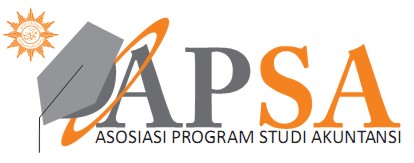Bliss effect of taxpayers in adopting blockchain technology
DOI:
https://doi.org/10.18196/jai.v24i2.16730Keywords:
Adoption of Blockchain Technology, Tax, Self-Determination Theory, Technology Acceptance Model, Autonomy, Perceived Enjoyment, Behavioral IntentionAbstract
Research aims: This study aimed to investigate the intention to adopt blockchain technology (BT) from the taxpayer’s perspective.
Design/Methodology/Approach: The data were collected from an online survey with 135 effective respondents and analyzed using Partial Least Square (PLS) for model and hypothesis testing.
Research findings: It was found that perceived enjoyment could mediate the effect of autonomy on intentions to use blockchain technology in tax administration. However, it has been proven that autonomy had a greater direct effect than the indirect effect of perceived enjoyment as a mediation.
Theoretical contribution/Originality: This research discusses how people react to using blockchain technology in the tax administration system. The use of blockchain technology will later have an impact on the transparency and effectiveness of taxation. Practically, from within the taxpayer arises a desire to carry out his obligations using blockchain technology. Blockchain technology is essential to facilitate and increase transparency in the effectiveness of tax administration systems.
Practitioner/Policy implication: The findings of this study offer a practical guide for tax authorities as regulators in designing the BT implementation in the tax administration system that will increase transparency and efficiency.
Research limitation/Implication: This study has several limitations. First, the model and hypothesis in this study have never been researched as one model. Second, some respondents only have a hazy understanding of how the blockchain works. Hence, future research may be able to broaden the research by investigating the outcomes of blockchain technology adoption.
References
Atombo, C., Wu, C., Zhang, H., & Wemegah, T. D. (2017). Perceived enjoyment, concentration, intention, and speed violation behavior: Using flow theory and theory of planned behavior. Traffic injury prevention, 18(7), 694-702. https://doi.org/10.1080/15389588.2017.1307969
Balog, A., & Pribeanu, C. (2010). The role of perceived enjoyment in the students’ acceptance of an augmented reality teaching platform: A structural equation modelling approach. Studies in Informatics and Control, 19(3), 319–330.
Baños, R., Fuentesal, J., Conte, L., Ortiz-Camacho, M. D. M., & Zamarripa, J. (2020). Satisfaction, enjoyment and boredom with physical education as mediator between autonomy support and academic performance in physical education. International Journal of Environmental Research and Public Health, 17(23), 1–10. https://doi.org/10.3390/ijerph17238898
Chao, C. M. (2019). Factors determining the behavioral intention to use mobile learning: An application and extension of the UTAUT model. Frontiers in Psychology, 10, 1–14. https://doi.org/10.3389/fpsyg.2019.01652
Chayomchai, A. (2020). The online technology acceptance model of generation-Z people in Thailand during COVID-19 crisis. Management and Marketing, 15(s1), 496–512. https://doi.org/10.2478/mmcks-2020-0029
Chen, A., Lu, Y., & Wang, B. (2016). Enhancing perceived enjoyment in social games through social and gaming factors. Information Technology and People, 29(1), 99–119. https://doi.org/10.1108/ITP-07-2014-0156
Deci, E. L. (1971). Effects of externally mediated rewards on intrinsic motivation. Journal of Personality and Social Psychology, 18(1), 105–115. https://doi.org/10.1037/h0030644
Falwadiya, H., & Dhingra, S. (2022). Blockchain technology adoption in government organizations: a systematic literature review. Journal of Global Operations and Strategic Sourcing 15(3), 473-501. https://doi.org/10.1108/JGOSS-09-2021-0079
Fathali, S., & Okada, T. (2016). A self-determination theory approach to technology-enhanced out-of-class language learning intention: A case of Japanese EFL learners. International Journal of Research Studies in Language Learning, 6(4), 53-64. https://doi.org/10.5861/ijrsll.2016.1607
Fatz, F., Hake, P., & Fettke, P. (2019, July). Towards tax compliance by design: a decentralized validation of tax processes using blockchain technology. In 2019 IEEE 21st conference on business informatics (CBI) (Vol. 1, pp. 559-568). IEEE. https://doi.org/10.1109/CBI.2019.00071
Florenthal, B. (2019). Young consumers’ motivational drivers of brand engagement behavior on social media sites: A synthesized U&G and TAM framework. Journal of Research in Interactive Marketing, 13(3), 351–391. https://doi.org/10.1108/JRIM-05-2018-0064
Gangire, Y., Da Veiga, A., & Herselman, M. (2019, March). A conceptual model of information security compliant behaviour based on the self-determination theory. In 2019 Conference on Information Communications Technology and Society (ICTAS) (pp. 1-6). IEEE. https://doi.org/10.1109/ICTAS.2019.8703629
Gao, S., & Li, Y. (2021). An empirical study on the adoption of blockchain-based games from users’ perspectives. Electronic Library, 39(4), 596–614. https://doi.org/10.1108/EL-01-2021-0009
Garanina, T., Ranta, M., & Dumay, J. (2022). Blockchain in accounting research: current trends and emerging topics. Accounting, Auditing & Accountability Journal, 35(7), 1507-1533. https://doi.org/10.1108/AAAJ-10-2020-4991
Ghozali, I., & Latan, H. (2015). Partial least square: konsep, teknik, dan aplikasi menggunakan program warppls 3.0. UNDIP.
Hartono, S., & Budiarsih, R. (2022). Potensi kesuksesan penerapan pajak penghasilan terhadap transaksi aset kripto di Indonesia. Jurnal Pajak Dan Keuangan Negara (PKN), 4(1), 132-146. https://doi.org/10.31092/jpkn.v4i1.1740
Hasan, A. A.-T., Sumon, S. M., Islam, M. T., & Hossain, M. S. (2021). Factors influencing online shopping intentions: the mediating role of perceived enjoyment. Turkish Journal of Marketing, 6(3), 239–253. https://doi.org/10.30685/tujom.v6i3.132
Heidari, HH., Moosakhani, M., Alborzi, M., Divandari, A., & Radfar, R. (2017). Evaluating the factors affecting behavioral intention in using blockchain technology capabilities as a financial instrument. Journal of Money And Economy, 13(2), 195-219. http://jme.mbri.ac.ir/article-1-423-en.html
Hofmann, E., Hartl, B., Gangl, K., Hartner-Tiefenthaler, M., & Kirchler, E. (2017). Authorities’ coercive and legitimate power: The impact on cognitions underlying cooperation. Frontiers in Psychology, 8, 1–15. https://doi.org/10.3389/fpsyg.2017.00005
Hu, X., Chen, Z., Davison, R. M., & Liu, Y. (2022). Charting consumers’ continued social commerce intention. Internet Research, 32(1), 120–149. https://doi.org/10.1108/INTR-07-2020-0397
Kabir, M. R. (2021). Behavioural intention to adopt blockchain for a transparent and effective taxing system. Journal of Global Operations and Strategic Sourcing, 14(1), 170-201. https://doi.org/10.1108/JGOSS-08-2020-0050
Khazaei, H. (2020). Integrating cognitive antecedents to utaut model to explain adoption of blockchain technology among Malaysian SMEs. International Journal on Informatics Visualization, 4(2), 85–90. https://doi.org/10.30630/joiv.4.2.362
Knee, C. R., Hadden, B. W., Porter, B., & Rodriguez, L. M. (2013). Self determination theory and romantic relationship processes. Personality and Social Psychology Review, 17(4), 307–324. https://doi.org/10.1177/1088868313498000
Lee, C. C., Kriscenski, J. C., & Lim, H. S. (2019). An empirical study of behavioral intention to use blockchain technology. Journal of International Business Disciplines, 14(1), 1-21. https://www.researchgate.net/publication/335209893
Lee, Y., Lee, J., & Hwang, Y. (2015). Relating motivation to information and communication technology acceptance: Self-determination theory perspective. Computers in Human Behavior, 51, 418-428. https://doi.org/10.1016/j.chb.2015.05.021
Linares, M., Gallego, M. D., & Bueno, S. (2021). Proposing a TAM-SDT-Based Model to Examine the User Acceptance of Massively Multiplayer Online Games. International Journal of Environmental Research and Public Health, 18(7), 3687. https://doi.org/10.3390/ijerph18073687
Luo, Y., Lin, J., & Yang, Y. (2021). Students’ motivation and continued intention with online self-regulated learning: A self-determination theory perspective. Zeitschrift Fur Erziehungswissenschaft, 24(6), 1379–1399. https://doi.org/10.1007/s11618-021-01042-3
Man, S. S., Alabdulkarim, S., Chan, A. H. S., & Zhang, T. (2021). The acceptance of personal protective equipment among Hong Kong construction workers: An integration of technology acceptance model and theory of planned behavior with risk perception and safety climate. Journal of Safety Research, 79, 329–340. https://doi.org/10.1016/j.jsr.2021.09.014
Mangoting, Y., Aprilia, C., Melliani, F., & Grace Evangelina, J. (2021). Tax Fraud Intentions with an Integrative Model Approach. Jurnal ASET (Akuntansi Riset), 13(2), 331–347. http://ejournal.upi.edu/index.php/aset/article/view/38880
Martela, F. (2020). Self‐Determination Theory. The Wiley Encyclopedia of Personality and Individual Differences: Models and Theories, 369-373. https://doi.org/10.1002/9781119547143.ch61
Martela, F., Hankonen, N., Ryan, R. M., & Vansteenkiste, M. (2021). Motivating voluntary compliance to behavioural restrictions: Self-determination theory–based checklist of principles for COVID-19 and other emergency communications. European Review of Social Psychology, 32(2), 305–347. https://doi.org/10.1080/10463283.2020.1857082
McEvoy, S., Trainor, S., Caffrey, N., Torreggiani, W. C., & Collins, D. R. (2009). Timing and modality of neuroimaging in acute stroke: an Irish perspective. Irish Medical Journal, 102(4), 127-127. https://europepmc.org/article/med/19552300
Meyer, K. E., Van Witteloostuijn, A., & Beugelsdijk, S. (2017). What’s in a p? reassessing best practices for conducting and reporting hypothesis-testing research. Journal of International Business Studies, 48(5), 535–551. https://doi.org/10.1057/s41267-017-0078-8
Micarelli, A., Stamper, J., & Panourgia, K. (2016). Motivational gamification strategies rooted in self-determination theory for social adaptive e-learning. Lecture Notes in Computer Science (Including Subseries Lecture Notes in Artificial Intelligence and Lecture Notes in Bioinformatics), 9684, v–vi. https://doi.org/10.1007/978-3-319-39583-8
Mujiyati, M., & Achyari, D. (2008). The Role of Perceived Enjoyment on Motivating the Internet Use. Benefit: Jurnal Manajemen dan Bisnis, 12(1), 132-145. 10.23917/benefit.v12i1.1274
Mukoffi, A., Sulistiyowati, Y., Himawan, S., & Kontesa, K. (2022). Korupsi pajak dan keadilan perpajakan pada kepatuhan wajib pajak (studi kasus pada kantor pelayanan pajak (KPP) Batu. Jurnal Paradigma Ekonomika, 17(1), 85-94. https://doi.org/10.22437/jpe.v17i1.17339
Nandi, A., & Mehendale, S. (2022). E-learning in formal education under forced conditions using SDT and TAM. Cardiometry, 22, 268–276. https://doi.org/10.18137/cardiometry.2022.22.268276
OECD. (2017). Technology Tools to Tackle Tax Evasion and Tax Fraud. OECD Publishing. http://www.oecd.org/tax/crime/technology-tools-to-tackle-tax-evasion-and-tax-fraud.htm
Oyman, M., Bal, D., & Ozer, S. (2022). Extending the technology acceptance model to explain how perceived augmented reality affects consumers' perceptions. Computers in Human Behavior, 128, 107127. https://doi.org/10.1016/j.chb.2021.107127
Pipitwanichakarn, T., & Wongtada, N. (2019). Leveraging the technology acceptance model for mobile commerce adoption under distinct stages of adoption: A case of micro businesses. Asia Pacific Journal of Marketing and Logistics, 33(6), 1415–1436. https://doi.org/10.1108/APJML-10-2018-0448
Racero, F. J., Bueno, S., & Gallego, M. D. (2020). Predicting students’ behavioral intention to use open source software: A combined view of the technology acceptance model and self-determination theory. Applied Sciences, 10(8), 2711. https://doi.org/10.3390/APP10082711
Rakhmawati, H., Sutrisno, T., & Rusydi, M. K. (2019). Research in Business & Social Science Influence of TAM and UTAUT models of the use of e-filing on tax compliance. International Journal of Research in Business and Social Science, 9(1), 106–111. https://doi.org/10.20525/ijrbs.v9i1.576
Rifat, A., Nisha, N., & Iqbal, M. (2019). Predicting e-tax service adoption: integrating perceived risk, service quality and TAM. Journal of Electronic Commerce in Organizations, 17(3), 71–100. https://doi.org/10.4018/JECO.2019070105
Ryan, R. M., & Deci, E. L. (2000). Self-determination theory and the facilitation of intrinsic motivation, social development, and well-being. American Psychologist, 55(1), 68–78. https://doi.org/10.1037/0003-066X.55.1.68
Ryan, R. M., & Deci, E. L. (2008). From ego depletion to vitality: Theory and findings concerning the facilitation of energy available to the self. Social and Personality Psychology Compass, 2(2), 702–717. https://doi.org/10.1111/j.1751-9004.2008.00098.x
Ryan, R. M., Deci, E. L., Vansteenkiste, M., & Soenens, B. (2021). Building a science of motivated persons: Self-determination theory’s empirical approach to human experience and the regulation of behavior. Motivation Science, 7(2), 97. https://doi.org/10.1037/mot0000194
Sabani, A. (2021). Investigating the influence of transparency on the adoption of e-Government in Indonesia. Journal of Science and Technology Policy Management, 12(2), 236-255. https://doi.org/10.1108/JSTPM-03-2020-0046
Sarosa, S. (2019). The role of brand reputation and perceived enjoyment in accepting compulsory device’s usage: Extending UTAUT. Procedia Computer Science, 161, 115–122. https://doi.org/10.1016/j.procs.2019.11.106
Septiana, I., Salim, M., & Daulay, M. Y. I. (2020). Analysis the Effect of Habit and Perceived Enjoyment Mediated By Behavioural Intention To Adoption on Students Using Mobile Banking Bni. Managament Insight: Jurnal Ilmiah Manajemen, 15(1), 78–94. https://doi.org/10.33369/insight.15.1.78-94
Setyowati, M. S., Utami, N. D., Saragih, A. H., & Hendrawan, A. (2020). Blockchain technology application for value-added tax systems. Journal of Open Innovation: Technology, Market, and Complexity, 6(4), 1–27. https://doi.org/10.3390/joitmc6040156
Shin, J., Moon, S., Cho, B. H., Hwang, S., & Choi, B. (2022). Extended technology acceptance model to explain the mechanism of modular construction adoption. Journal of Cleaner Production, 342, 130963. https://doi.org/10.1016/j.jclepro.2022.130963
Sholihin, M., & Ratmono, D. (2013). Analisis sem-pls dengan warppls 3.0. C.V ANDI OFFSET.
Shrestha, A. K., & Vassileva, J. (2019, December). User acceptance of usable blockchain-based research data sharing system: an extended TAM-based study. In 2019 First IEEE International Conference on Trust, Privacy and Security in Intelligent Systems and Applications (TPS-ISA), 203-208. IEEE. https://doi.org/10.1109/TPS-ISA48467.2019.00033
Tsai, Y. Y., Chao, C. M., Lin, H. M., & Cheng, B. W. (2018). Nursing staff intentions to continuously use a blended e-learning system from an integrative perspective. Quality and Quantity, 52(6), 2495–2513. https://doi.org/10.1007/s11135-017-0540-5
Widyarini, L. A. (2021). Intention to use self-service technology based on basic human needs. Matrik : Jurnal Manajemen, Strategi Bisnis Dan Kewirausahaan, 15(1), 86. https://doi.org/10.24843/matrik:jmbk.2021.v15.i01.p08
Widyawati, N. (2018). Pengaruh partisipasi anggaran terhadap kinerja manajerial: integrasi variabel mediasi dan moderasi (studi pada Rumah Sakit di Kota Surabaya). Jurnal Akuntansi AKUNESA, 6(1), 40-60.
Yayman, D. (2021). Blockchain in taxation. Journal of Accounting and Finance, 21(4), 140-155. https://doi.org/10.33423/jaf.v21i4.4530
Zhao, X., Lynch, J. G., & Chen, Q. (2010). Reconsidering Baron and Kenny: Myths and truths about mediation analysis. Journal of Consumer Research, 37(2), 197–206. https://doi.org/10.1086/651257
Downloads
Published
How to Cite
Issue
Section
License
License
 Journal of Accounting and Investment is licensed under Creative Commons Attribution Attribution-NonCommercial-NoDerivatives 4.0 International License.
Journal of Accounting and Investment is licensed under Creative Commons Attribution Attribution-NonCommercial-NoDerivatives 4.0 International License.




